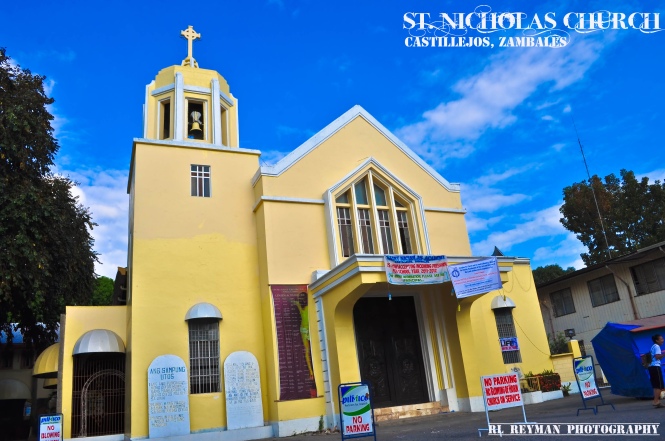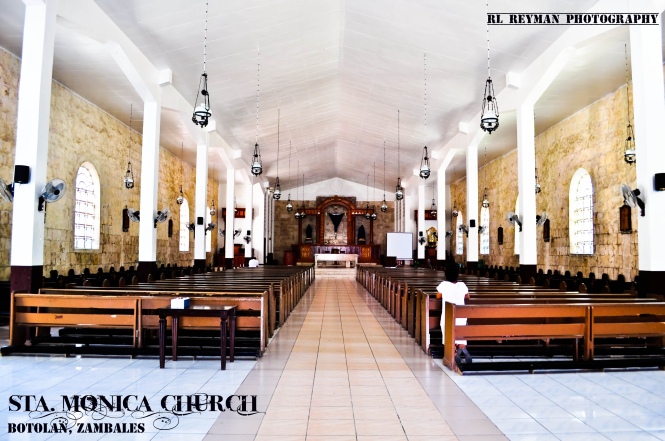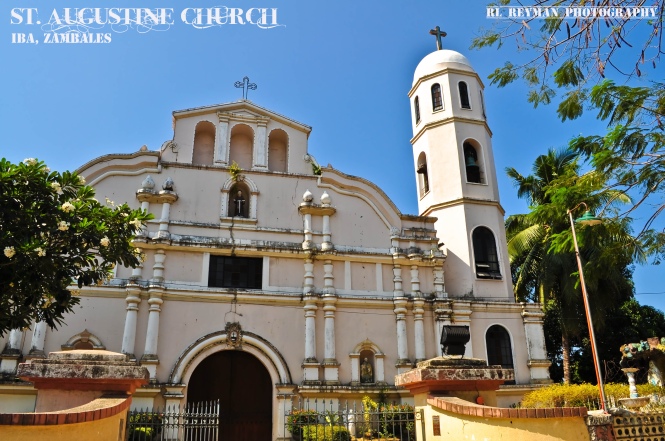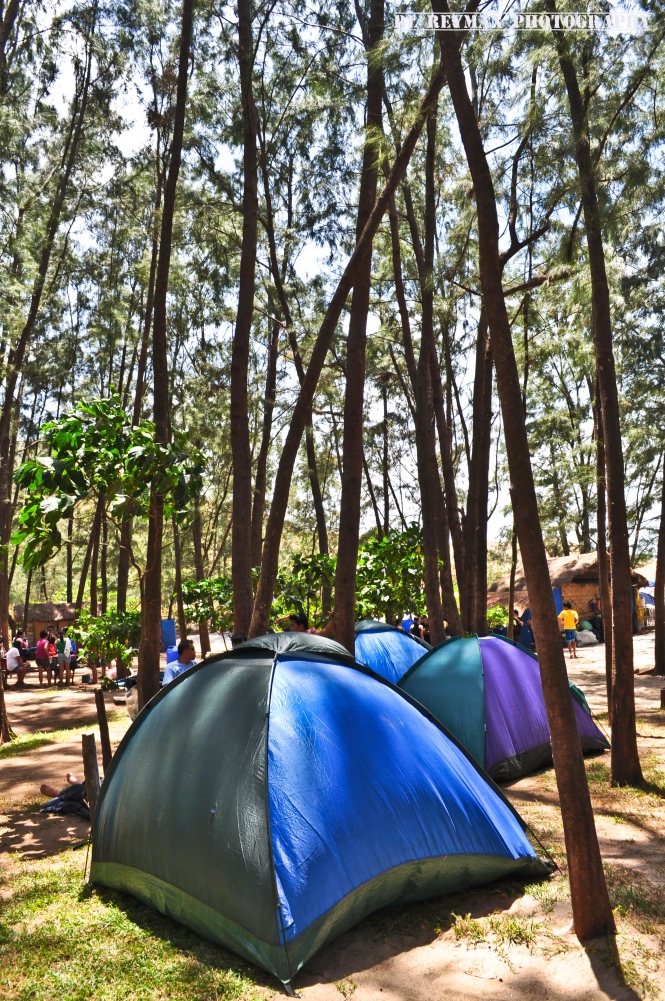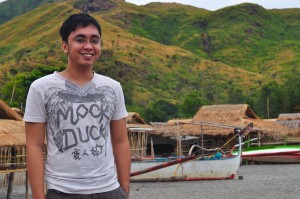Wake up! Stop dreaming about roses, chocolates, exclusive dates, fancy restaurants, and cheesy moments. Love month is over. Get up, ransack your closets, and prepare your most comfy summer attire. Keep your school manuals and reading materials in a box, file your leave from work, get your phone, contact your friends, relatives, officemates, dates, and plan your vacation. Tell them that you’re gonna take the lead in planning; that they need to relax and put respite on their busy days.
Since it’s officially summer, this is my simple way of helping you plan your itinerary to Zambales. For the purpose of giving directions, I am going to use public transport because I don’t own a car.
Things to remember first:
1- Zambal is not the main dialect in Zambales, it’s Tagalog. Only those located in the Northern tip of the province speak Zambal. Also, most Zambaleños speak fluent Ilocano.
2- Olongapo is part of Zambales. It’s the first town (the only city) and transport hub of Zambales. Terminals of buses to other parts of Luzon are located here.
3- Subic Bay Metropolitan Authority (SBMA) is different from Subic town. Most tourists commonly refer SBMA as Subic, not the Subic town.
4- All towns in Zambales are accessible via public transport (jeepney and bus). Transportation is not a problem except those in far-flung barangays.
5- Zambales is easy to explore. As long as you know its 14 municipalities, you no longer need a map.
6- Zambales has the best mangoes and pastillas.
Once you put these 6 things in mind, you are good to go.
BUS TERMINAL AND FARE MATRIX IN PHILIPPINE CURRENCY (PESO)
|
DESTINATION |
VICTORY TERMINAL AND FARE |
ESTIMATED TRAVEL TIME FROM BALINTAWAK (in hours) |
|||
|
Caloocan |
Cubao |
Sampaloc |
Pasay |
||
|
Olongapo |
202 |
207 |
207 |
218 |
2:40-2:50 |
|
Subic |
221 |
226 |
226 |
236 |
3-3:15 |
|
Castillejos |
230 |
235 |
235 |
245 |
3:20-3:30 |
|
San Marcelino |
247 |
252 |
252 |
262 |
3:30-3:45 |
|
San Antonio |
260 |
265 |
265 |
275 |
3:50-4 |
|
San Narciso |
272 |
277 |
277 |
287 |
4:05-4:15 |
|
San Felipe |
282 |
287 |
287 |
298 |
4:20-4:30 |
|
Cabangan |
301 |
306 |
306 |
316 |
4:30-4:40 |
|
Botolan |
332 |
337 |
337 |
347 |
4:40-4:50 |
|
Iba |
342 |
347 |
347 |
357 |
4:50-5 |
|
Palauig |
364 |
374 |
374 |
384 |
5-5:10 |
|
Masinloc |
403 |
408 |
408 |
418 |
5:25-5:45 |
|
Candelaria |
422 |
427 |
427 |
437 |
5:50-6 |
|
Sta. Cruz |
451 |
456 |
456 |
466 |
6:10-6:20 |
|
Masinloc |
403 | 408 | 408 | 418 | 5:25-5:45 |
|
Candelaria |
422 | 427 | 427 | 437 |
5:50-6 |
| Sta. Cruz | 451 | 456 | 456 | 466 |
6:10-6:20 |
*Genesis (Cubao and Pasay) and Saulog also have trips to Olongapo.
Subic Bay Metropolitan Authority (SBMA)
|
ATTRACTION |
ENTRANCE FEE (in Peso) |
FARE (From SBMA gate in Peso) |
|
Zoobic Safari |
449 |
400 |
|
Tree Top Adventure |
Package starts at 350 |
150-160 |
|
Ocean Adventure |
500 |
400-450 |
*Minimum taxi fare is 70.
Zoobic Safari
If you want to experience exotic wildlife, this is the right place for you. Aside from tigers, its natural environment makes someone feel that he is actually having encounters with wild animals in their own habitat.
There is a restaurant inside that serves affordable food. I suggest bringing your own snacks though, beverage and other refreshments like ice cream and popsicles are a little bit pricey. The management allows food inside as long as you don’t feed the animals. Safari can be toured in 5-6 hours including lunch and the animal show.
Tree Top Adventure
Wanna feel an adrenaline rush? Conquer your acrophobia? Or just pretend to be braver even just for a day? You must try this adventure. Tree drop is a must! Get a package in order to save cash in case you want to experience most of its adventures. In Tree Top, breath of fresh air and jungle-like view are a plus.
You can spend at least 2 hours here depending on your package and the number of visitors; the more the visitors the longer the queue in every adventure.
Ocean Adventure
After the wildlife and jungle, it’s time to experience the marine life. Watch sea lions and dolphins perform, wow their audience and show how adorable they are. Swim with the dolphins for 45 minutes and pay P4,200. Yes, you read that right, four thousand two hundred pesos. I am sure that would hurt my pocket but according to a friend who recently tried the encounter, it is priceless.
There are several beach resorts in SBMA, but I haven’t tried exploring its seas except when I had a quick night swimming at Camaya resort way back in 2009. Cargo ships that are very visible to my eyes dissuaded me from swimming. It gives me a feeling that the sea is exploited. This is just me.
I love the night life in SBMA though—very frisky and relaxing. Bars by the seashore are the most visited; with Pier One as the most famous. Restaurants are also dotted in the area— from the most affordable to the most expensive. Not to mention the casino and hotels. Whenever I have time and budget, I bring my family here to experience an atmosphere of the city in the province once in a while.
Reminders and Directions:
-I would recommend that you use your car if you are traveling with your whole family or with a group. SBMA is only 2 and ½ hours from Manila via SCTEX. The cost of commuting and having your private transport is almost even if you’re in a group. Besides, it’s hassle-free.
-Take a bus bound to Olongapo. Get off at Olongapo terminal. Ride a yellow or red jeepney to SM Olongapo. From SM, walk through the gate until you’re inside SBMA, and then rent a cab to your preferred attractions. Though there are buses inside SBMA, your only choice is to hire a taxi.
Islands and Beach Resorts
Zambales is a hit for many because of its unspoiled islands and beautiful beach resorts, making it as one of the most favorite vacation spots in the Philippines (yes, I pronounce! J). Its accessibility to Metro Manila and nearby provinces also contributes to its popularity.
Anawangin Cove
Nowadays, who does not know Anawangin? This is the most renowned and sought after cove in Zambales. Due to irrepressible hype, it becomes congested during summer especially in the month of April. When you try to visit it in January or February, the cove is all yours. Albeit it turns as congregation of campers this season, Anawangin still has its beauty.
There are two ways to reach Anawangin: via land and water. By land, you need to trek Mt. Pundaquit for 4-5 hours. By water, a boat from Pundaquit will take you there for 30-40 minutes. I haven’t tried to traverse Mt. Pundaquit, but travelers claim it is a very rewarding experience. I’ll do it next time.
Nagsasa Cove
This is the sister of Anawangin, and I have to be fair, Nagsasa is more beautiful. Aside from it looks more bucolic and picturesque, it is less crowded too. Its pristine waters hemmed by the mountains are soothing to one’s eyes. It got me charmed in an instant.
Nagsasa is accessible via boat from Pundaquit for 1hr and 15 to 30 minutes.
Capones Island
Capones is famous for its lighthouse that was built during the Spanish era. It’s a good side trip in case you plan to visit either of two Zambales’ coves. Don’t forget to ascend to top of the lighthouse to get a glimpse of the peerless view of the West Philippine Sea.
It would take you 25-30 minutes from Pundaquit to reach Capones.
I’m also including here the Camara Island as another quick break in your journey going to Anawangin.
20 minutes via boat from Pundaquit.
Pundaquit
Though it serves as the jump off point to many islands and coves, for me, Pundaquit is a gem on its own. It also has a cove-like characteristic because it reclines in between mountains. Stay here until sunset and you will witness how the sun seamlessly recedes in the island. You can find classy resorts here too.
Reminders and Directions
-Hop a bus to Iba or Sta. Cruz Zambales. Get off at San Antonio public market. Ride a tricycle to Pundaquit (P30/each). From Pundaquit, hire a boat to any of your desired island/cove. If you missed your trip to Iba or Sta. Cruz, choose Olongapo instead. Get off at Olongapo terminal, and then ride a bus or jeepney that passes through San Antonio.
-I suggest you make reservations early for the boat. If you don’t have any camping gears, there are also tent for rent in Pundaquit.
This might help:
Contact person: Alvin Bonan
Numbers: 0928-779-9849 and 0917-993-5166
RENTALS:
TENT: 2pax- P250, 4pax- P400
BOAT: (Round trip) From Pundaquit to
Anawangin Cove- P200-250/ pax
Capones Island- P200-250/ pax
Camara Island- P200-250/ pax
Nagsasa Cove- P300-350/pax
Taliyasin -P300-350/pax
Smallest boat can carry 4-5 pax. Largest or the ferry boat can carry a minimum of 20 pax. Kuya Alvin can also provide a service (tricycle) to pick you up at San Antonio Market.
Prices here are as of March 2011. I’m not sure if the rates are still the same until now. You can save money if you’d do island hopping. Before, I rented a boat for 5 persons to Camara, Capones, and Anawangin for a day trip and paid discounted amount.
Crystal Beach
Crystal Beach resort is located in San Narciso, Zambales. Its friendly environment makes it a good venue for recreation, team building and family get together. It provides good spot for surfers as well. I have been here for numerous times but each visit feels like the first time.
Reminders and Directions
-There is a restaurant and canteen here. As much as you can, bring your own food because goods are a little bit pricey in the resort for budget travelers.
-Ride a bus to Iba or Sta. Cruz Zambales. Get off at San Narciso. Take a tricycle to Crystal each.
Magalawa Island
Magalawa Island will always be my personal favorite among the islands and beaches I visited in Zambales. Every time I think of Magalawa, I always remember the tranquility that snagged me while I was gazing at its scintillating white sand beach and sitting under a tree untroubled. The picture of me camping alone, feasting on variety of sea foods, and resting without minding the ticking of clock was a scene to reprise over and over.
Reminders and Directions
-You can camp here or stay in one of the resorts in the island. You are free to bring food. Worry less if you didn’t have enough because there’s a cafeteria here that serves affordable food. Palauig public market is out of way. So I discourage you to entertain any idea of buying raw food in the market. Buy goods in Manila or in Olongapo instead.
-Ride a bus en route to Sta. Cruz. Get off at Brgy. Pangolinan, Paluig, Zambales (you will see a Pangolinan sign at the right side of the highway). From Pangolinan, ride a tricycle to Brgy. Luan (20-25 minutes). Fare is P150 if you rent the whole tricycle. They usually allow maximum of two passengers per tricycle because of the rough roads. From Brgy. Luan, ride a boat to Magalawa Island (10 minutes).
Potipot Island
Potipot is the most prominent white sand island in Zambales. Although it is situated in the second farthest town of Zambales, tourists are willing to travel extra mile just to have a feel of its powdery sand. Potipot is a very small island that looks like a scoop of ice cream from afar. You can explore the whole island in less than 30 minutes just by your feet.
Reminders and Directions
-If you want to stay overnight in the island, I strongly suggest to bring your own tent. Although there are cottages and tent for rent in Potipot, there’s no way to make reservations because the management follows first come first served basis. Since it is just 5 to 10 minutes away from the mainland, where a lot of beach resorts are situated, you can just stay in any of the resorts that suit your taste and have a whole day visit in Potipot. There is no electricity supply in the island when I last visited it in April 2011. Even if there’s a water supply, toilet is a problem during summer due to heavy influx of people.
-Ride a bus bound to Sta. Cruz, Zambales. Get off at Brgy. Uacon, Candelaria, Zambales. Walk or ride a tricycle to your preferred resort. Rent a boat to Potipot (400 roundtrip for 4 persons).
Mt. Tapulao
Mt. Tapulao is slowly gaining its reputation not just to mountaineers but also to travelers wanting to experience a worthy climb. I haven’t climbed this mountain yet, but a story from a mountaineer-friend would be of great help to those who long to conquer its summit one day. (story of tramping philippines)
Mt. Tapulao is located in Palauig.
President Ramon Magsaysay Ancestral House
The ancestral house of the most loved Philippine president, the late Ramon Magsaysay, who died in a tragic plane crash, is located in my beloved hometown Castillejos. Since you will pass thru it before reaching Zambales’s beautiful islands, might as well include it in your itinerary. Inside, you’ll get a glimpse of his life during his childhood and when he became the chief executive of our country. Sometimes, it feels good to trace the lives of our previous presidents and be inspired by their legacies.
Directions
-Ride a bus to Iba or Sta. Cruz. Get off at Brgy. Sta. Maria chapel. The ancestral house is located beside the chapel.
Mapanuepe Lake
Mapanuepe Lake in Aglao, San Marcelino may be considered as one of the least recognized spots in Zambales, but it has already been featured on Destination of Truth, an American TV series. This lake was formed during the eruption of Mt. Pinatubo. Flash floods submerged two barangays which later on formed into a lake. Now, only the cross of the sunken church is visible—a limpid testament how catastrophic the Mt. Pinatubo eruption was for Zambaleños.
The lake looks calm with scenic mountain framework, but its story remains disturbing and enigmatic. Visit tips and directions here
If you are a fan of old churches, you might be interested to visit these houses of worship in Zambales.
Zambales is not only for Zambaleños, it is for the people who know how to take care of our environment regardless of nationality. So if you are only going to tarnish the natural beauty of my home province, just stay out. And if you are a resident but participating in the devastation of its natural wealth, shame on you.
I’m indeed fortunate and blessed that I have all these in Zambales. If you think I have already explored enough, I’ll be honest, I am just starting because I am sure there are still a lot to discover about my home province.
If you visit Zambales this summer, you’ll end up singing this: “I wanna dance in Zambales, I wanna feel the heat in Zambales!” LSS right? 🙂
______________________________________________________________________________
Last Monday, I posted these questions on Facebook: What do you love most about Zambales? Which for you is the best place in Zambales?
Here are some of the answers:
Ng Clara: Punta de Uian kuya.. sa Pundakit San Antonio, Zambales. 🙂
Jans Julhusin: Potipot Island- it’s like having our own VIRGIN version of BORACAY!
Dane Policarpio: Definitely Mt. Tapulao. Punished us for 2 stormy days last year that’s why we came back to redeem ourselves and did a dayhike on this mountain 2 months ago. Semi-absurd and insane idea of dayhiking the highest mountain in Central Luzon but it was worth it.
Jhoy Lagman: Anawangin island is one of the best when we visited 1st time in 2009… Sad part when we visited last yr dami n nagbago, pero we still enjoyed the island…
Mary Anne Mendoza: I really love the idea na nasa tabing dagat yung rest house mo. I have witnessed the development of your tita’s rest house, and every time n pumupunta ako dun (4-5x na?!?) there’s always something bago. So I always look forward to visit the place. Everytime I am back home from that “resort” super stress free and relax yung feeling. I really love the place kc I always feel at home! Beautiful place + Good friends + friendly people + “Micro budget” = Happy Us!
Maria Isabel Reyman: I love Pundaquit and Subic beach. It’s fun to reminisce our childhood days.
Sarah Jane Trimor: Island hopping in San Antonio
Avriel May Visitacion: I love Zambales beach.
Aleli Geraldino: Valentines day was memorable to me. I’ve finally found someone to celebrate it with. I had a splashy date with Cito & Kira, two of the adorable dolphins in Ocean Adventure Subic. It was a “dream come true” for someone who loves the ocean. I’ve been yearning to touch them, to kiss them and to swim with them and that dream materialized last month. I’ve traveled all the way from Cebu to experience this once-in-a-lifetime dolphin ride encounter. The experience might be pricey to some tourist, but at that moment, I didn’t care, I was living on a dream and from what I’ve experienced? It’s priceless.
I hope to include yours too.



























